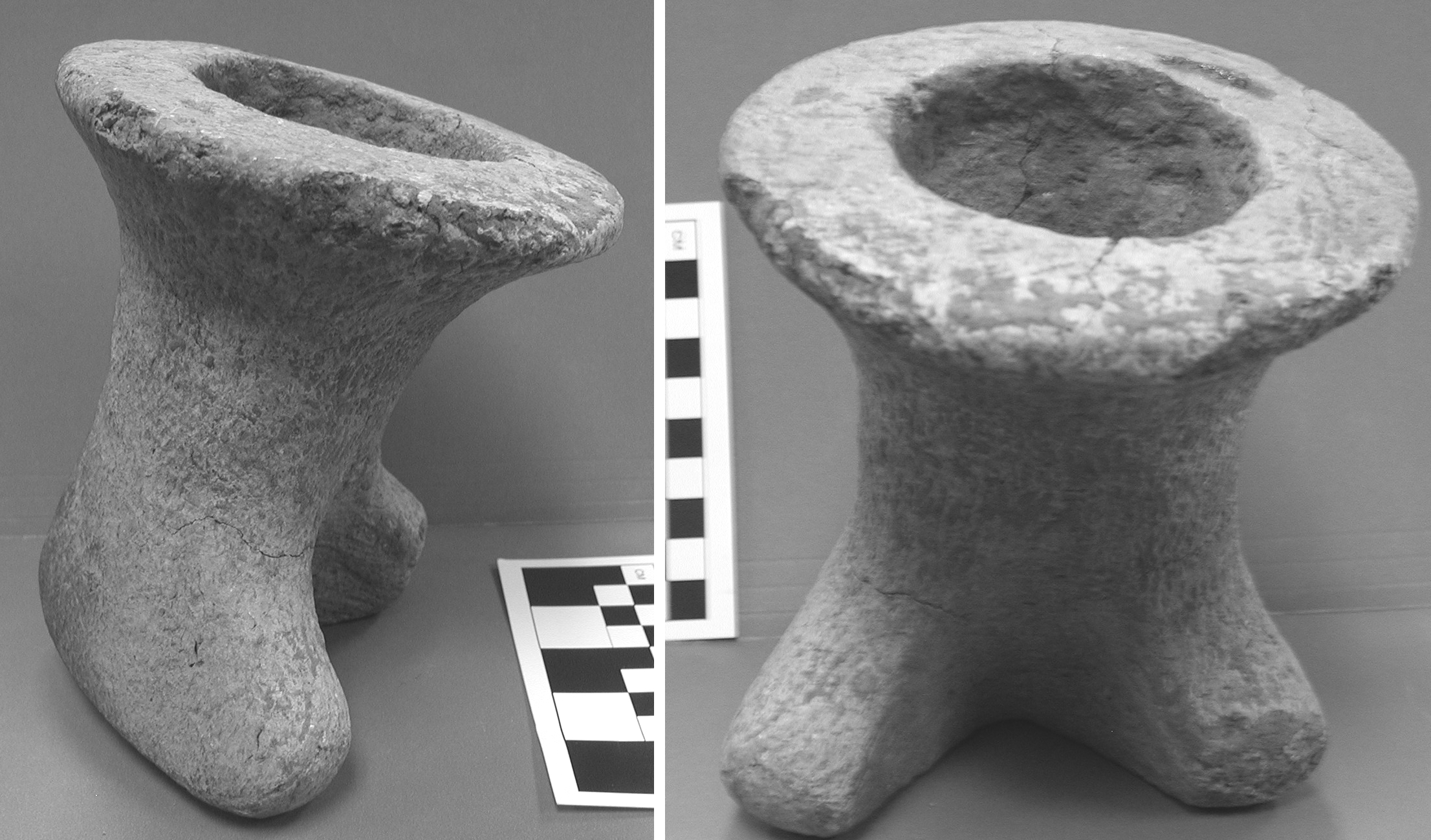Cahokia's Precincts
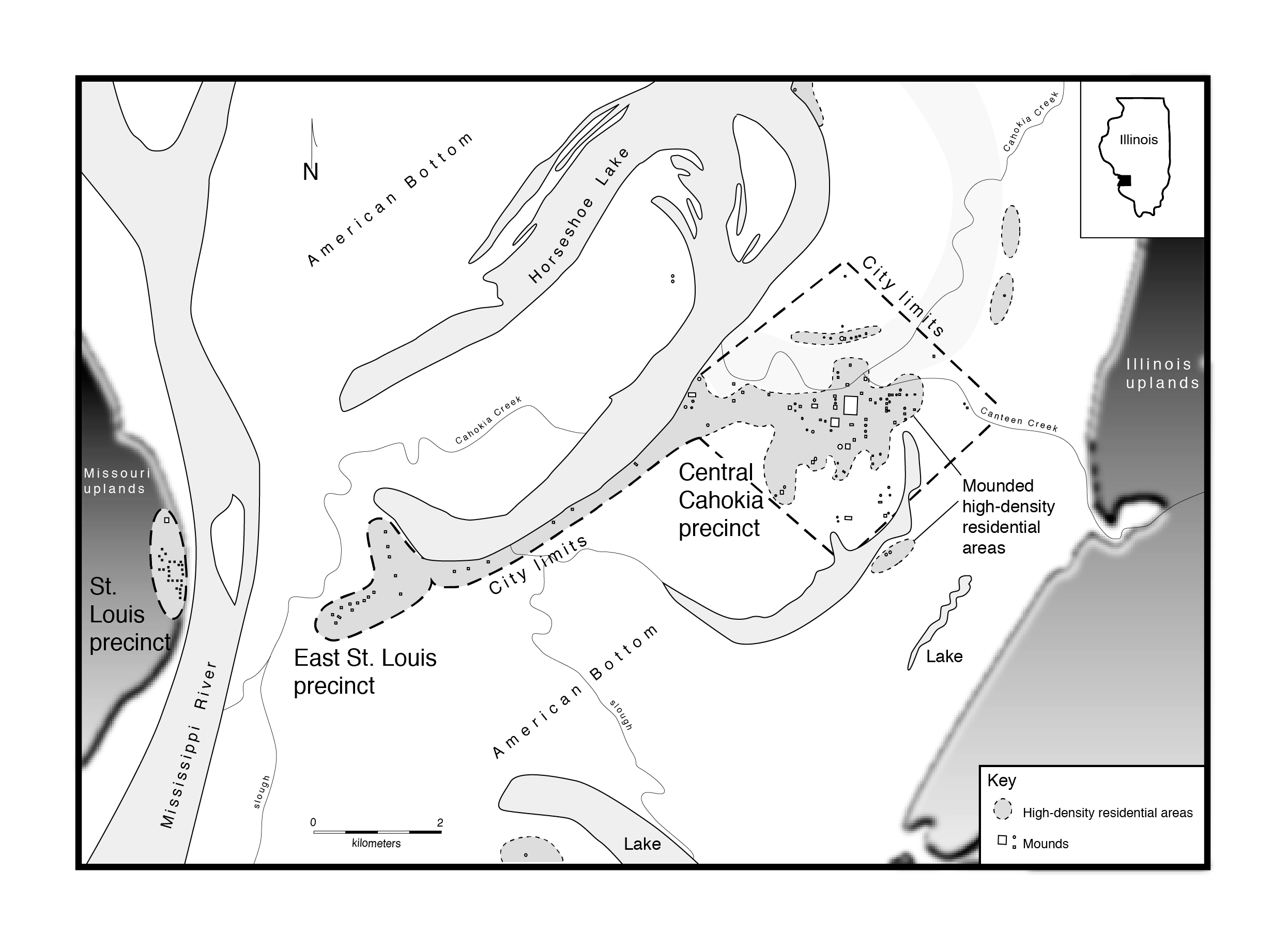 The most extensive and historically significant pre-Columbian proto-urban complex north of Mexico is located on the floodplain of the Mississippi River in St. Clair and Madison Counties, Illinois. Here sit the ruins of the ancient American Indian city of Cahokia, its “downtown” precinct preserved since the 1920s as the Cahokia Mounds State Historic Site. Today, these ruins are visible as a series of grass-covered rectangular, flat-topped earthen pyramids around spacious public plazas. Invisible without excavation are the once-extensive residential neighborhoods of this impressive complex, comprised of many hundreds to thousands of pole-and-thatch houses, timbered public halls, storage huts, temples, upright marker posts, and a Woodhenge. To the south and west of this precinct, the city has amorphous boundaries owing to the variable location and intensity of habitation over the course of the city’s life, from the 11th into the early 14th centuries C.E. Two other impressive precincts, both with dozens of pyramids and thousands of pole-and-thatch building neighborhoods and complexes, are located in East St. Louis and St. Louis.
The most extensive and historically significant pre-Columbian proto-urban complex north of Mexico is located on the floodplain of the Mississippi River in St. Clair and Madison Counties, Illinois. Here sit the ruins of the ancient American Indian city of Cahokia, its “downtown” precinct preserved since the 1920s as the Cahokia Mounds State Historic Site. Today, these ruins are visible as a series of grass-covered rectangular, flat-topped earthen pyramids around spacious public plazas. Invisible without excavation are the once-extensive residential neighborhoods of this impressive complex, comprised of many hundreds to thousands of pole-and-thatch houses, timbered public halls, storage huts, temples, upright marker posts, and a Woodhenge. To the south and west of this precinct, the city has amorphous boundaries owing to the variable location and intensity of habitation over the course of the city’s life, from the 11th into the early 14th centuries C.E. Two other impressive precincts, both with dozens of pyramids and thousands of pole-and-thatch building neighborhoods and complexes, are located in East St. Louis and St. Louis.
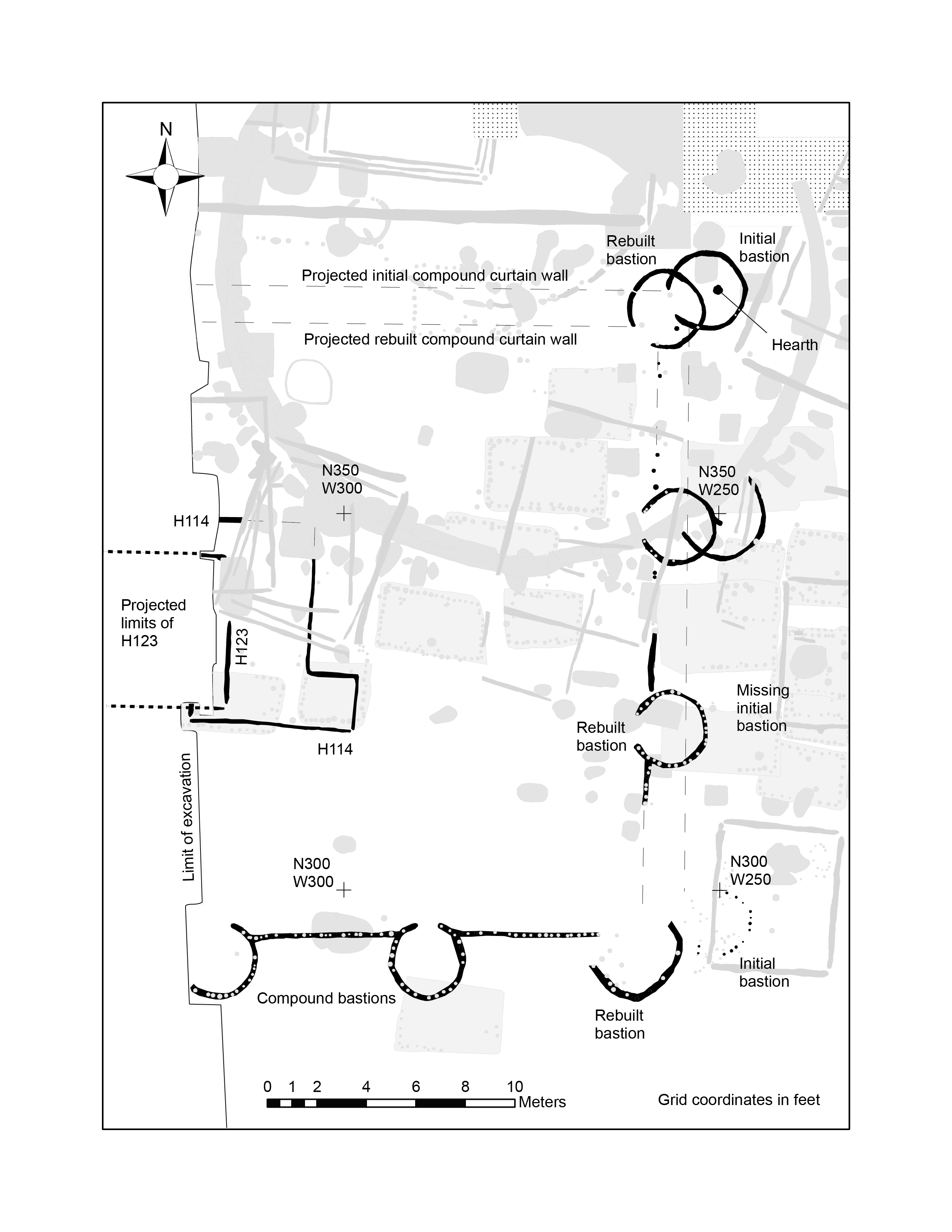 Many people do not appreciate either the scale of the original complex of Cahokia or its historical prominence in pre-Columbian native North America. But most archaeologists agree that, at one point in the late 11th century C.E., thousands of people lived in this sprawling city (Pauketat and Lopinot 1997). Presumably, hundreds to thousands more lived in one of the dozen or so outlying towns and “shrine” complexes (Alt and Pauketat 2015; Pauketat and Emerson 1997). Another twenty or thirty thousand lived in farmsteads or outlying villages, which appear to have been ritually and economically organized around Cahokian “nodal” sites (Alt 2006; Emerson 1997a, 1997b; Emerson et al. 2008; Milner 1998; Pauketat 2003).
Many people do not appreciate either the scale of the original complex of Cahokia or its historical prominence in pre-Columbian native North America. But most archaeologists agree that, at one point in the late 11th century C.E., thousands of people lived in this sprawling city (Pauketat and Lopinot 1997). Presumably, hundreds to thousands more lived in one of the dozen or so outlying towns and “shrine” complexes (Alt and Pauketat 2015; Pauketat and Emerson 1997). Another twenty or thirty thousand lived in farmsteads or outlying villages, which appear to have been ritually and economically organized around Cahokian “nodal” sites (Alt 2006; Emerson 1997a, 1997b; Emerson et al. 2008; Milner 1998; Pauketat 2003).
There is no doubt that Cahokia’s central precincts were home to the largest concentration of pyramidal mounds in North America, totaling about 200. Most of these, about 120, were part of the primary Cahokia precinct (Fowler 1997). Some 45 to 50 more dotted the East St. Louis precinct 8 km to the southwest and physically continuous with Cahokia, connected by a row of small pyramids and habitation areas along Indian Lake. Physically discontinuous, but just across the Mississippi River, were 26 more mounds centered on a large plaza located within what is today St. Louis. At each of the Cahokia, East St. Louis, and St. Louis precincts were plazas and other filled and leveled surfaces. The bluff edges east of Cahokia and, possibly in St. Louis, had been sculpted in great labor projects (e.g., Fortier 2007; Koldehoff et al. 2000; Pauketat 2005).
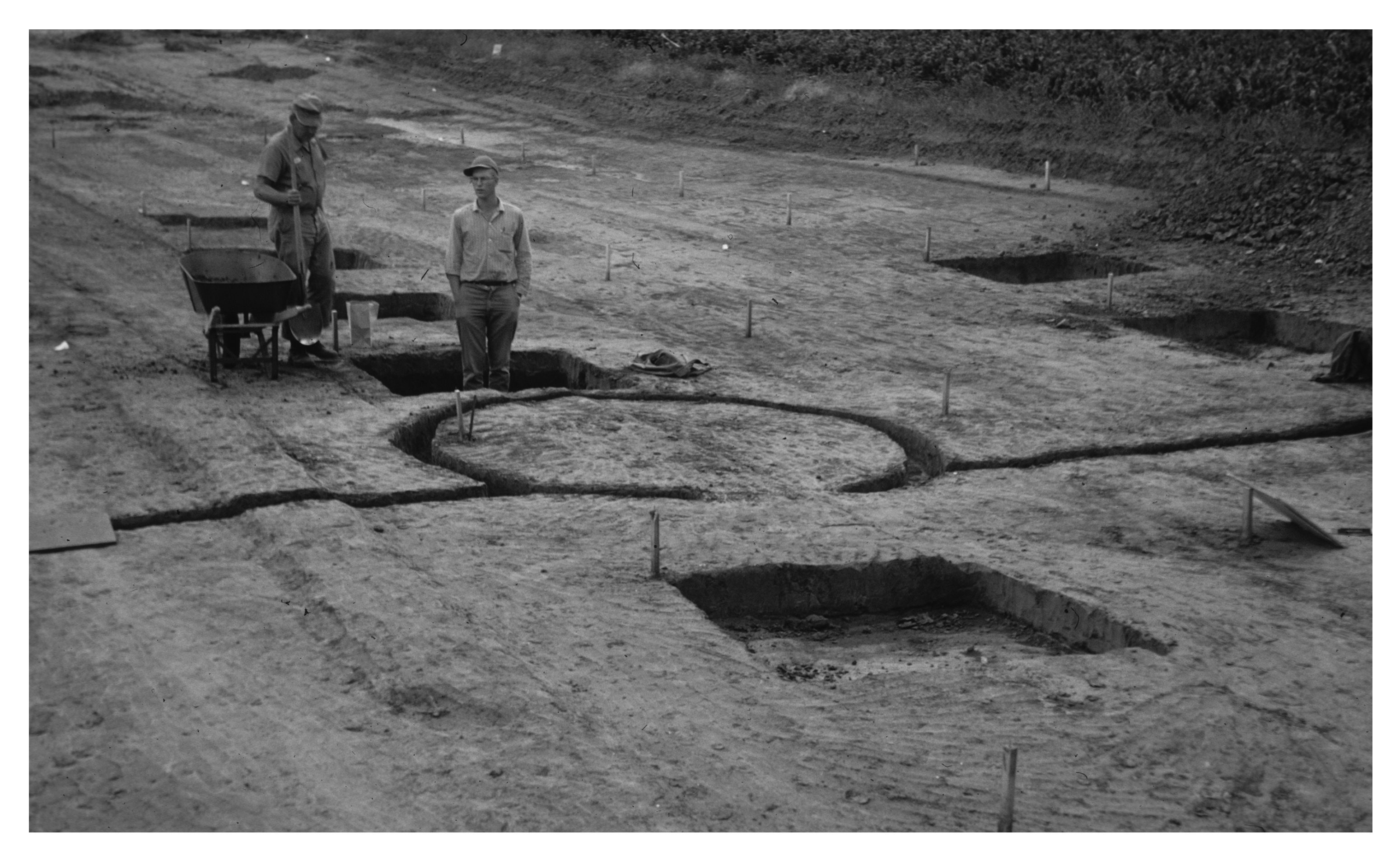 One of largest earthen constructions in North America is not a pyramid at all, but a “Great Plaza” (Alt et al. 2010; Dalan et al. 2003; Fowler 1997; Holley et al. 1993). This tremendous 20-plus hectare flat expanse sat at the very center of Cahokia. Building it was a tremendous earthmoving project dating to sometime around 1050 CE. As a labor project, only Monks Mound, the site’s great central pyramid, exceeded its scale (Alt et al. 2010). Monks Mound, possibly built at the same time as the Great Plaza and a host of other monuments, neighborhoods, and outlying complexes, is the third largest pyramid in the ancient Americas (Collins and Chalfant 1993). It towers 30 meters above the surrounding plazas and residential areas, rising in three principal terraces to the palatial building(s) that had, in the pyramid’s final 12th century form, occupied the summit (Reed 2009).
One of largest earthen constructions in North America is not a pyramid at all, but a “Great Plaza” (Alt et al. 2010; Dalan et al. 2003; Fowler 1997; Holley et al. 1993). This tremendous 20-plus hectare flat expanse sat at the very center of Cahokia. Building it was a tremendous earthmoving project dating to sometime around 1050 CE. As a labor project, only Monks Mound, the site’s great central pyramid, exceeded its scale (Alt et al. 2010). Monks Mound, possibly built at the same time as the Great Plaza and a host of other monuments, neighborhoods, and outlying complexes, is the third largest pyramid in the ancient Americas (Collins and Chalfant 1993). It towers 30 meters above the surrounding plazas and residential areas, rising in three principal terraces to the palatial building(s) that had, in the pyramid’s final 12th century form, occupied the summit (Reed 2009).
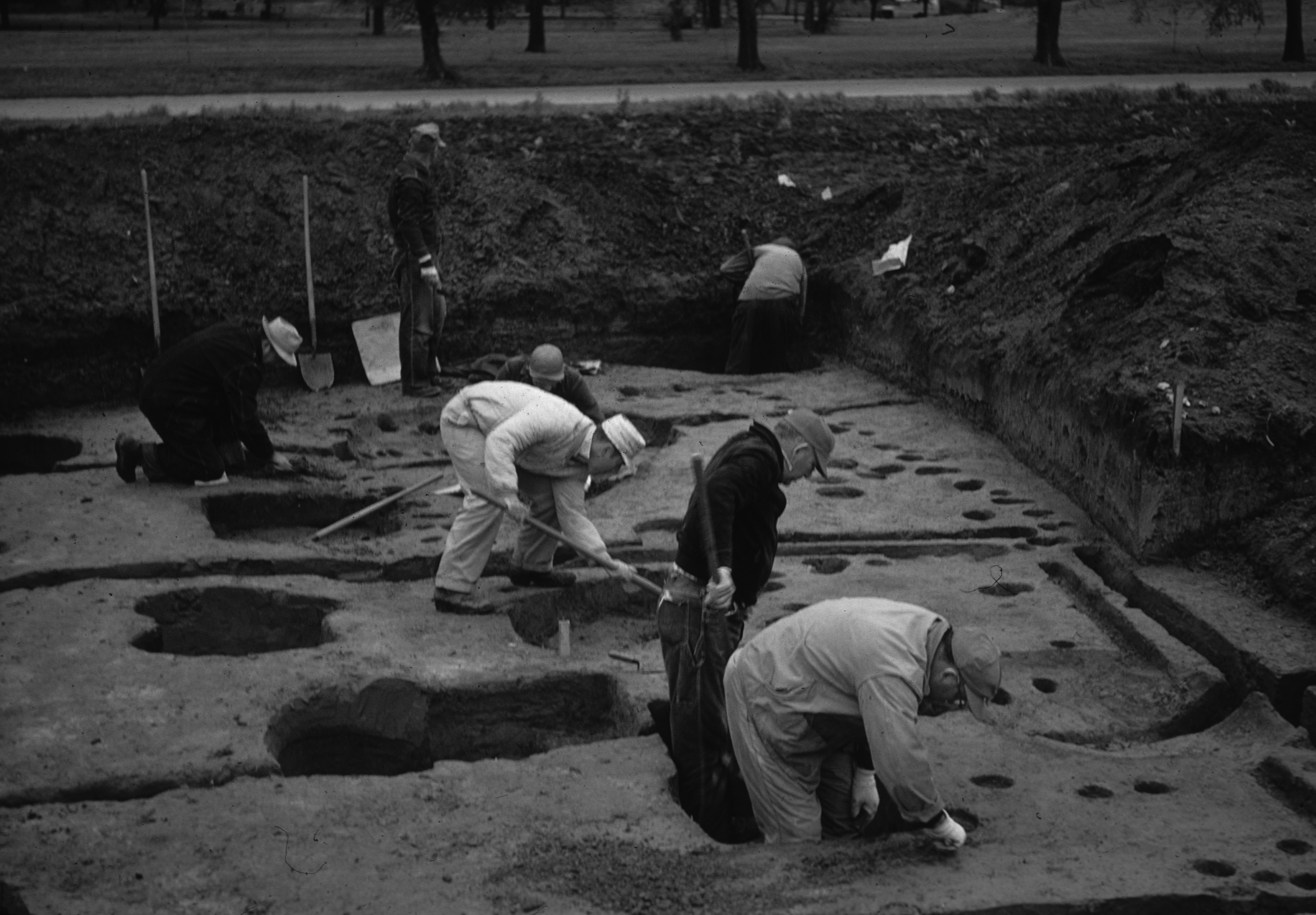 Given these attributes, many archaeologists agree that the people of Cahokia, if not also simply the sheer political and religious power of the place, had a historical impact on far flung groups hundreds of kilometers north, south, east, and west (e.g., Gibbon 1974; Hall 1967, 1989, 1991; Stoltman 2000). That which happened at Cahokia or because of Cahokians mattered a great deal to many peoples of the American mid-continent for centuries to come (Pauketat 2009). Beginning with the 1960 and 1961 excavations into Cahokia’s downtown precinct, the archaeological details of this ancient city finally coming to light (Pauketat 1998, 2013). More recent excavations in the East St. Louis precinct by the Illinois State Archaeological Survey are among the largest ever undertaken in North America, and are dramatically changing how we think of this great pre-Columbian complex.
Given these attributes, many archaeologists agree that the people of Cahokia, if not also simply the sheer political and religious power of the place, had a historical impact on far flung groups hundreds of kilometers north, south, east, and west (e.g., Gibbon 1974; Hall 1967, 1989, 1991; Stoltman 2000). That which happened at Cahokia or because of Cahokians mattered a great deal to many peoples of the American mid-continent for centuries to come (Pauketat 2009). Beginning with the 1960 and 1961 excavations into Cahokia’s downtown precinct, the archaeological details of this ancient city finally coming to light (Pauketat 1998, 2013). More recent excavations in the East St. Louis precinct by the Illinois State Archaeological Survey are among the largest ever undertaken in North America, and are dramatically changing how we think of this great pre-Columbian complex.
References Cited
Alt, Susan M. 2006. Cultural Pluralism and Complexity: Analyzing a Cahokian Ritual Outpost, Urbana: Unpublished Ph.D. dissertation, Department of Anthropology, University of Illinois.
Alt, Susan M. and Timothy R. Pauketat, 2015. 'The Elements of Cahokian Shrine Complexes and the Basis of Mississippian Religion'. In Religion and Politics in the Ancient Americas, edited by Sarah Barber and Arthur Joyce, Boulder: University of Colorado Press.
Alt, Susan M., Jeffery D. Kruchten, and Timothy R. Pauketat, 2010. 'The Construction and Use of Cahokia's Grand Plaza'. Journal of Field Archaeology, 35 (2), 131.
Collins, James M. and Michael L. Chalfant, 1993. 'A Second-Terrace Perspective on Monks Mound'. American Antiquity, 58, 319.
Dalan, Rinita A., George R. Holley, William I. Woods, Harold W. Watters, Jr., and John A. Koepke. 2003. Envisioning Cahokia: A Landscape Perspective, DeKalb: Northern Illinois University Press.
Emerson, Thomas E. 1997a. Cahokia and the Archaeology of Power, Tuscaloosa: University of Alabama Press.
Emerson, Thomas E., 1997b. 'Reflections from the Countryside on Cahokian Hegemony'. In Cahokia: Domination and Ideology in the Mississippian World, edited by Timothy R. Pauketat and Thomas E. Emerson, Lincoln: University of Nebraska Press, 190-228.
Emerson, Thomas E., Susan M. Alt, and Timothy R. Pauketat, 2008. 'Locating American Indian Religion at Cahokia and Beyond'. In Religion, Archaeology, and the Material World, edited by Lars Fogelin, Carbondale: Center for Archaeological Investigations, Occasional Paper No. 36, Southern Illinois University, 216-236.
Fortier, Andrew C. (ed.), 2007. The Archaeology of the East St. Louis Mound Center, Part II: The Northside Excavations Urbana: Illinois Transportation Archaeological Research Program, Transportation Archaeological Research Reports No. 22, University of Illinois.
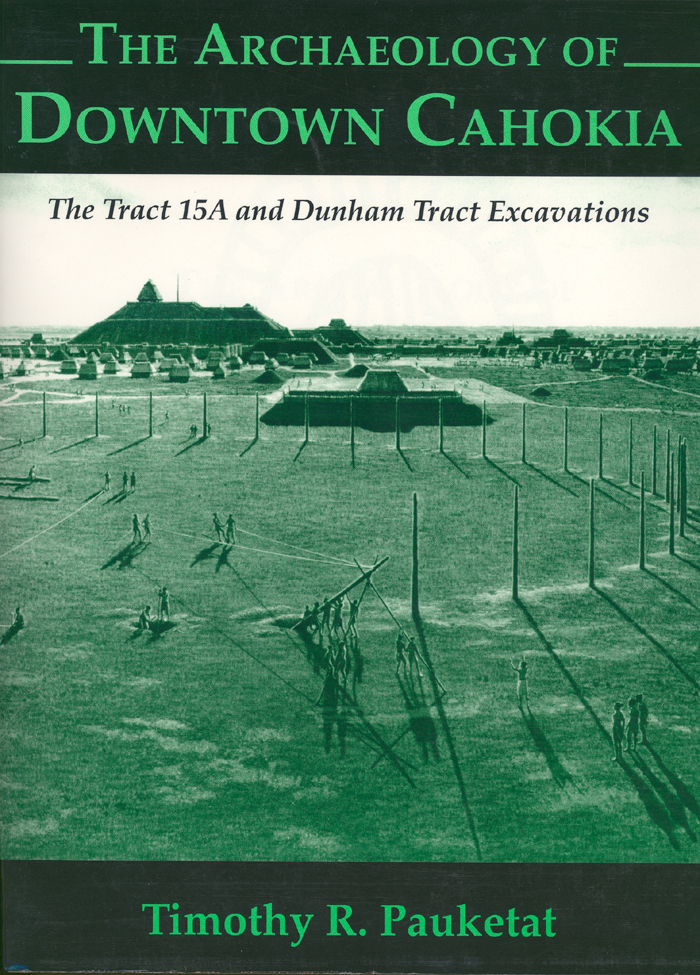 Fowler, Melvin L. 1997. The Cahokia Atlas: A Historical Atlas of Cahokia Archaeology, Urbana: Illinois Transportation Archaeological Research Program, Studies in Archaeology, Number 2, University of Illinois.
Fowler, Melvin L. 1997. The Cahokia Atlas: A Historical Atlas of Cahokia Archaeology, Urbana: Illinois Transportation Archaeological Research Program, Studies in Archaeology, Number 2, University of Illinois.
Gibbon, Guy E. , 1974. 'A Model of Mississippian Development and Its Implications for the Red Wing Area'. In Aspects of Upper Great Lakes Anthropology, edited by Elden Johnson, St. Paul: Minnesota Prehistoric Archaeology Series, no. 11, 129-137.
Hall, Robert L., 1967. 'The Mississippian Heartland and its Plains Relationships'. Plains Anthropologist, 12, 175.
Hall, Robert L., 1989. 'The Cultural Background of Mississippian Symbolism'. In The Southeastern Ceremonial Complex, edited by Patricia Galloway, Lincoln: University of Nebraska Press, 239-278.
Hall, Robert L., 1991. 'Cahokia Identity and Interaction Models of Cahokia Mississippian'. In Cahokia and the Hinterlands: Middle Mississippian Cultures of the Midwest, edited by Thomas E. Emerson and R. Barry Lewis, Urbana: University of Illinois Press, 3-34.
Holley, George R., Rinita A. Dalan, and Phillip A. Smith, 1993. 'Investigations in the Cahokia Site Grand Plaza'. American Antiquity 58, 306.
Koldehoff, Brad, Charles O. Witty, and Mike Kolb, 2000. 'Recent Investigations in the Vicinity of Mounds 27 and 28 at Cahokia: The Yale Avenue Borrow Pit'. Illinois Archaeology, 12, 199.
Milner, George R. 1998. The Cahokia Chiefdom: The Archaeology of a Mississippian Society, Washington, DC: Smithsonian Institution Press.
Pauketat, Timothy R. 1998. The Archaeology of Downtown Cahokia: The Tract 15A and Dunham Tract Excavations, Urbana: Illinois Transportation Archaeological Research Program, Studies in Archaeology Number 1, University of Illinois.
Pauketat, Timothy R., 2003. 'Resettled Farmers and the Making of a Mississippian Polity'. American Antiquity, 68, 39.
Pauketat, Timothy R. 2009. Cahokia: Ancient America's Great City on the Mississippi, New York: Viking-Penguin Press.
Pauketat, Timothy R. and Thomas E. Emerson, 1997. 'Introduction: Domination and Ideology in the Mississippian World'. In Cahokia: Domination and Ideology in the Mississippian World, edited by Timothy R. Pauketat and Thomas E. Emerson, Lincoln: University of Nebraska Press, 30-51.
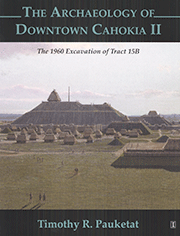 Pauketat, Timothy R. and Neal H. Lopinot, 1997. 'Cahokian Population Dynamics'. In Cahokia: Domination and Ideology in the Mississippian World, edited by Timothy R. Pauketat and Thomas E. Emerson, Lincoln: University of Nebraska Press, 103-123.
Pauketat, Timothy R. and Neal H. Lopinot, 1997. 'Cahokian Population Dynamics'. In Cahokia: Domination and Ideology in the Mississippian World, edited by Timothy R. Pauketat and Thomas E. Emerson, Lincoln: University of Nebraska Press, 103-123.
Pauketat, Timothy R. (ed.), 2005. The Archaeology of the East St. Louis Mound Center, Part I: The Southside Excavations Urbana: Transportation Archaeological Research Reports No. 21, Illinois Transportation Archaeological Research Program, University of Illinois.
Pauketat, Timothy R. (ed.), 2013. The Archaeology of Downtown Cahokia II: The 1960 Excavation of Tract 15B Urbana: Studies in Illinois Archaeology 8, Illinois State Archaeological Survey.
Reed, Nelson A., 2009. 'Excavations on the Third Terrace and Front Ramp of Monks Mound, Cahokia: A Personal Narrative'. Illinois Archaeology, 21 (1-89).
Stoltman, James B., 2000. 'A Reconsideration of the Cultural Processes Linking Cahokia to Its Northern Hinterlands During the Period A.D. 1000-1200'. In Mounds, Modoc, and Mesoamerica: Papers in Honor of Melvin L. Fowler, edited by Steven R. Ahler, Springfield: Illinois State Museum Scientific Papers, vol. 28, 439-467.
